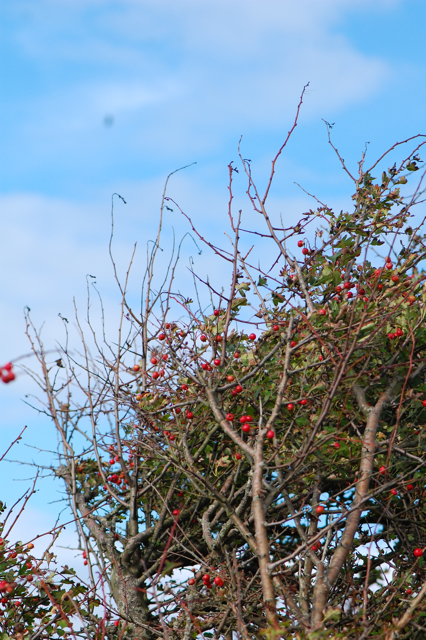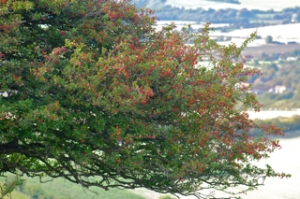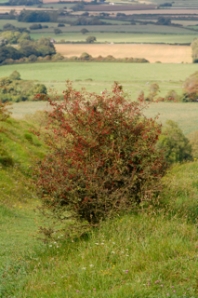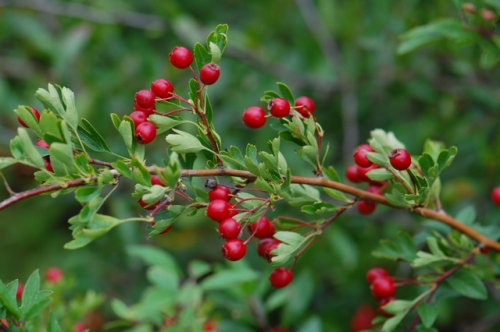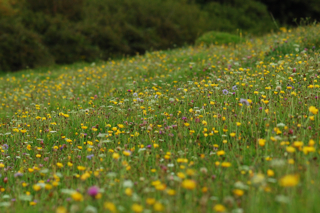The May, Whitethorn, Quickthorn, all are country names for this most remarkable of trees that blooms so prolifically throughout much of the month. I believe I have written about hawthorn more than any other plant, yet every season and every year affords me fresh insights into her great worth.
The blossoming of the May is one of the highlights of my herbal year. Though many dislike the smell, which is deep, musky and often compared to rotting meat (I don’t see the resemblance myself!) I find it nothing short of delightful – earthy, sensual and rich. It ties me to a sense of time and place and fills the countryside with wonder for the few short weeks it is in flower.
If you live in this corner of the world, the South of England, now is the time to harvest hawthorn flowering tops for teas, tinctures, elixirs and anything else you fancy. It is usual to pick a little bunch of the blossom, either just before or just after opening, with the first few leaves attached, as both blossom and leaf have important medicinal constituents. The photo below shows the amount that I usually pick for drying or tincture making.
Do remember when harvesting not to over pick from a single tree and to just take a little from each one as the blossoms will become berries in the autumn which are an important source of food for the birds and other creatures, as well as being food and medicine for us. Hawthorns are pollinated by a variety of insects including solitary bees and, due to dwindling insect populations, there are said to have been declining numbers of berries in recent years. They are still abundant in most parts and we humans, without the benefit of flight, tend to pick from lower branches whilst the birds feast on higher ones but it’s always good to bear in mind how many other creatures rely on exactly the same species that are so beneficial for us.
Hawthorn flowers are often acknowledged for their benefit in treating heart conditions and are typically included in preparations alongside the berries for a range of cadiovascular and circulatory disorders ranging from angina to chilblains. This is in part due to their antioxidant content found in the form of phenolic compounds which are actually even higher in the leaves and blossoms than they are in the berries. We tend to think of antioxidants occurring mainly in highly coloured foods like berries but you can see that the colour of the tea made from the flowering tops is also rich and deeply hued after being left to infuse for fifteen minutes or so.
Though truly enjoyable when drunk as a simple, hawthorn blossom also combines with a variety of other herbs to make any number of delicious teas. Here are some of my favourites:
Spicy – Combine 2-3 flowering tops with a couple of slices of ginger and an inch of cinnamon stick to wake the circulation and protect the heart.
Floral – Hawthorn blossom is both deeply calming and nurturing when combined with rose petals and linden blossom in a beautifully heart opening brew.
Seasonally Sleepy – A few cowslips flowers along with hawthorn blossom make a great bedtime tea as mentioned in my last post.
Sensual – Hawthorn tops, rose petals and half a vanilla bean thinly sliced make for a sweet, earthy and fragrant tea.
Despite being placed firmly in the category of a ‘heart herb’ in Western herbal medicine, hawthorn has a multifaceted personality, just like so many of our herbal allies. I consider the blossoms in particular to be a primary nervine tonic as they are deeply relaxing and calming to states of anxiety and over stimulation. I like to use them alongside other nervine herbs, like avena, for people who are sensitive to everything; loud noises, strong colours, smells and sensations and need to be calmed and comforted. In 19th century France an infusion of the blossoms was used to treat insomnia and herbalist Maurice Messegue writes “I myself make use of the hawthorn for nervous spasms, arteriosclerosis, angina and obesity and it is one of my favourite tranquiliser herbs.” It therefore makes an exceptional choice in problems where the circulatory and nervous systems are both affected such as nervous palpitations, restlessness and arrhythmia.
The powerful combination of antioxidants makes hawthorn blossoms and berries good food for the immune system as well and modern research suggests they have an inhibitory effect on the breakdown of collagen, therefore aiding healing and having an all round rejuvenating effect. Hawthorn is a very safe medicine that is tolerated by almost everyone though it is of course wise to consult with a herbalist before taking it alongside medications. It has been traditionally eaten as food, the young leaves in spring salads and the berries in jams and preserves later in the year so it can be incorporated in our lives in any way that suits us best.
The blossoming of Hawthorn has long been associated with reawakening life; with spring, with fertility and with love and it leaves you with a kind of lightness of spirit that dusts away the very last of the wintery drear. These two holly blue butterflies flew along the hedgerow beside me for a time, flirting in and out of the branches and rejoicing in the return of the sunshine. And I rejoiced along with them, for the return of this most cherished of herbal medicines and dearest of friends.







































